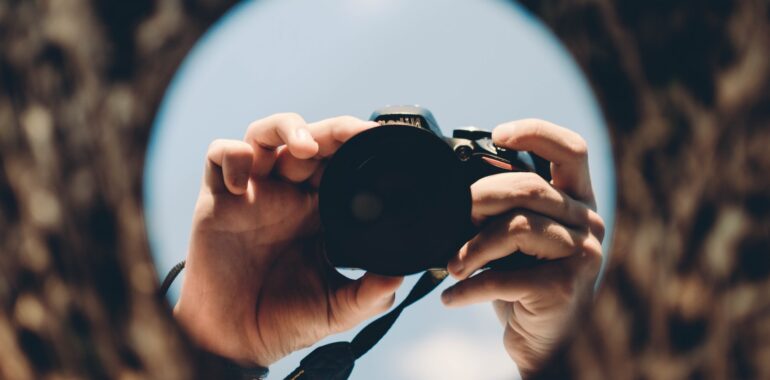10 tips for good photo processing

10 tips for good photo processing
A camera is a machine for recording light. It sees the world differently than humans do. And competent processing allows you to show the advantages of the frame, to reveal the potential of the image, to show the world how you saw that moment. Let us use the analogy of cooking: you can eat any food raw, but after proper processing, you will get something much tastier. It’s the same with an image. A “raw” picture from a camera is not the final product, but the source, the starting point for a finished work. This is why it is important for a photographer to learn not only how to use the camera, but also how to “develop” the resulting material.
Work with pictures only on a computer with a quality screen
The monitor is the photographer’s eye. Correct, unbiased color reproduction is very important for retouching. Very often on inexpensive monitors manufacturers artificially raise the contrast and color saturation, and the picture because of this looks unnatural. If you choose a laptop to work with the image, the decisive criterion must be the display. The screens based on the IPS matrix are well-proven.
View the result of retouching on different displays
Not all of your viewers will view your photos on a screen with impeccable color reproduction. That’s why it’s a good idea to look at your images on other, less-than-perfect displays before publishing them. It is worth reviewing pictures on a smartphone and television – it becomes clear how others will see the photo. Often these checks result in corrections so that the picture looks good on any screen.
Develop your own script for working with photos
The technological process of creating a photo begins with generating an idea, planning and organizing the shooting, making arrangements with the model, or buying airline tickets. The moment you press the shutter button is important, but far from the last. Here’s a sample list of the stages of creating a finished photo, which are done after the shoot, on the PC:
- selecting and cataloging the footage;
- RAW conversion;
- retouching and color correction;
- resizing and preparation for publication.
The first two steps usually involve RAW converters like Adobe Lightroom or Phase One Capture One. But for the fine work with color and contrast, the elimination of minor flaws (such as flaws in the skin of the model) is used Adobe Photoshop. The final preparation for publication is also more convenient to perform in this program.
But every photographer works with photos in his own way. It is important to find the most convenient and fastest scenario for yourself. How and where do I save the source files? Where do I send the copies that are already prepared for publication? In what programs and in what order do you open the photos?
Developing your own scenario you can speed up the whole process, because you know exactly what and where you have to edit, which processing steps are waiting for the photo.

Make a plan of action
Often a photographer, having opened the image in an editor, doesn’t know what he/she wants to get as a result, and starts turning over all the settings. This approach is probably a good one at first, when you are exploring the functions of photo editors. But later it will have a negative effect on the result: the processing will turn out to be unnatural, pictures will look different.
Therefore, before you start, make a plan, describe what you want to fix in the picture. And after that, go ahead. In my practice of landscape photography it usually starts with adjusting the dynamic range, white balance, exposure, horizon and perspective distortion in a RAW converter. In Adobe Photoshop it’s worth removing unwanted objects (dust on the sensor, for example). In Adobe Photoshop, thanks to masks and layers, the possibilities of making local adjustments are much wider than in the RAW converter. It is possible that you can improvise, but it is better to stick to the original plan. And if the plan doesn’t work, start with a new algorithm.
A high-performance computer – comfort and efficiency when working with photos
Of course, the screen is the main detail of the laptop for the photographer.
The power of simple office laptops is hardly enough for serious work with graphics. Here it is worth paying attention to specialized models. There are options on the market for content creators: photographers, designers, videographers. For good performance in graphics editors, it is important to have a discrete video card.
The order of photo storage – their safety and efficient operation
More often than not, photos get lost not because of technical problems, but because of clutter. Randomly named folders, lack of systematization – these are the main reasons.
For a photo archive it is convenient to sort photos into folders by dates, naming them “year-month-number-description of the event”. You can also use cloud storages. They allow you to back up your files on-the-fly, and provide links to your clients. Not a fan of cloud storage? An external hard drive is an alternative.
Don’t get carried away with excessive processing
At the beginning of the creative path a photographer wants to try all the techniques, available filters and adjustments. It makes the result of processing unnatural. Where are the limits of acceptable processing? It all depends on the taste of each viewer and photographer. But one thing is certain: blatantly “over-photoshopped” photos rarely evoke a positive reaction. Retouching that is not conspicuous is good. When processing a photo, try to make a little less correction than you would like – so you can reinsure a little.
Don’t work with the photo for a long time without a break
Your eyes get used to the picture on the screen, and the color perception changes with time. If you look at saturated colors for a long time, they will cease to seem as such, you will want to raise the saturation. Therefore, it is important to take breaks, say, every 15-30 minutes. Look out the window, into the distance. You can collect a selection of photos with a color reference for you and periodically review them, adjusting your perception.
Don’t post a photo as soon as you have processed it
Color perception may change throughout the day. Therefore do not be in a hurry to publish or send a photo “with a bang”. If time permits, keep the photos and look at them again the next day, or at least a couple of hours after they have been processed. After the pause, you’ll see the shots differently, and you’ll be able to notice previously overlooked nuances.
Find your style
As with any creative activity, there are styles, trends and fashions in processing. The same photo can be processed in different ways, and all options will have a right to life. Once you’ve learned not to make mistakes, start looking for your recognizable style, not only in your photography, but also in your processing. It will determine what programs, techniques and tools you use.
It may happen that you take photos in one style for example, but persistently do it in another. This is even a good thing. However, to form your own taste in processing, you need to look at quality photos more often. It’s like playing at an online casino, where a player develops his winning strategy by playing roulette, poker or slot machines.

Bonus tip: always learn
The world does not stand still. New techniques, tools, and processing styles appear. Yes, the basics haven’t changed much in recent decades, but every year something comes along that can adjust your approach. To keep up with the times, you have to keep learning. The photographer who thinks he already knows everything is bad, it’s a sign of creative stagnation.